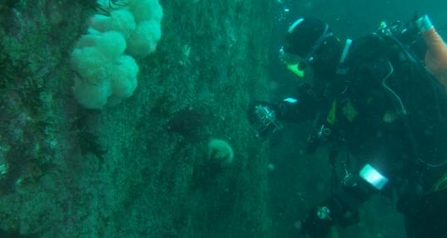To me the excitement of diving is the unknown. In the UK the water is rarely clear enough to see beyond four or five meters, so as you descend into the green blue below you really don’t know what you are going to find. The dives are all well planned, you have used the charts and so you know roughly what type of seabed is there, you also know the depth and you have a good idea of what the currents will be doing, but there is always a sense of excitement and anticipation as the seabed forms begin to appear beneath you.
It’s a privilege to be able to visit this other world and I have found that this experience changes you. When I started to dive I became more and more aware of the pressing need to protect marine life after witnessing both its great beauty and fragile vulnerability. I wanted to do something to support the marine conservation efforts being made by the Wildlife Trusts and other NGOs and this is when I discovered Seasearch.


